Lecture Programme: 2023-24 season
• in the Cultural Centre, calle Granada, Nerja and also
• available on the internet using Zoom
• available on 'catchup' for a limited period starting the day after the lecture.


 Love, courtship and marriage have always been a source of inspiration to authors and artists alike. One of the most famous portraits in the National Gallery is Van Eyck’s Arnolfini Portrait (1434), which is an enigmatic painting despite following many marital conventions. Yet depictions have a much longer history. Already in Ancient Egyptian and Etruscan art people chose to have themselves immortalised as loving couples, also on their tombs. Double or pendant portraits were later commissioned in large numbers from artists such as Holbein, Rubens, Rembrandt, Velázquez and Gainsborough. Yet other artists present a more ironic or even cynical attitude. After all, love and marriage are not always a bed of roses!
Love, courtship and marriage have always been a source of inspiration to authors and artists alike. One of the most famous portraits in the National Gallery is Van Eyck’s Arnolfini Portrait (1434), which is an enigmatic painting despite following many marital conventions. Yet depictions have a much longer history. Already in Ancient Egyptian and Etruscan art people chose to have themselves immortalised as loving couples, also on their tombs. Double or pendant portraits were later commissioned in large numbers from artists such as Holbein, Rubens, Rembrandt, Velázquez and Gainsborough. Yet other artists present a more ironic or even cynical attitude. After all, love and marriage are not always a bed of roses!
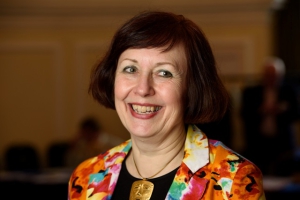 About Sophie Oosterwijk
About Sophie Oosterwijk
Sophie Oosterwijk was born in Gouda (Netherlands) and studied English at Leiden and Medieval Studies at York before obtaining two doctorates in Art History (Leicester) and English Literature (Leiden). She taught Art History at the universities of Leicester, Manchester and St Andrews, and still lectures for the University of Cambridge, TAS and other organisations. She returned to the Netherlands in 2011 where she now lives and works as a freelance lecturer, researcher, editor and translator. Sophie is also Vice President of the Church Monuments Society and has published widely.
How to watch
• in person in the Cultural Centre, Nerja• on the internet using Zoom
• on our YouTube channel for a limited period the day after the lecture.

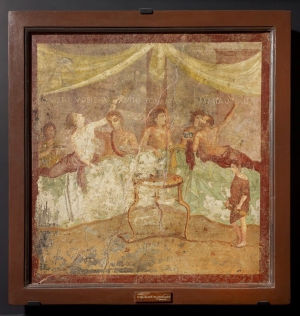
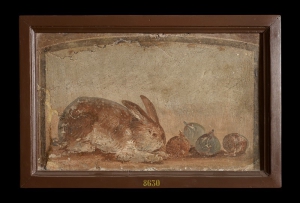 For the Romans, some of life’s most pleasurable moments were spent getting together to eat and drink, in a pub, in a simple flat or at a banquet in a triclinium or grand dining room. Last supper in Pompeii celebrates the Roman love affair with food and wine, in a journey from fields and vineyards to markets and shops, from tables to toilets and the tomb.
For the Romans, some of life’s most pleasurable moments were spent getting together to eat and drink, in a pub, in a simple flat or at a banquet in a triclinium or grand dining room. Last supper in Pompeii celebrates the Roman love affair with food and wine, in a journey from fields and vineyards to markets and shops, from tables to toilets and the tomb.
We visit the fertile vine-filled slopes of Vesuvius, then going into the bustling city, past shops and bars, we enter the home, with its grand reception rooms, and lovely garden filled with flowers and fountains. We recline in the dining room, with exotic food and fine wine, surrounded by Greek-style luxury; beautiful silver, mosaics and frescoes. But don’t go in the kitchen! No fridge, no running water, no hygiene (and an open cess pit next to the cooker!).
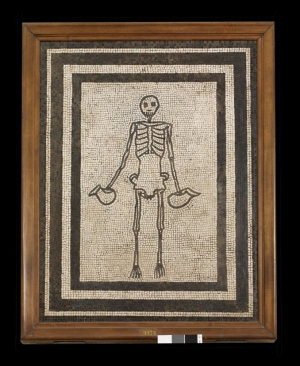 Lastly we look at how Roman ideas and customs on food caught on in Roman Britain. Along with Roman gods of fertility and wine come exotic imports like pepper, figs and finest fish sauce. We witness the birth of the British beer industry and even see the British dead, feasting into the afterlife, like all good Romans.
Lastly we look at how Roman ideas and customs on food caught on in Roman Britain. Along with Roman gods of fertility and wine come exotic imports like pepper, figs and finest fish sauce. We witness the birth of the British beer industry and even see the British dead, feasting into the afterlife, like all good Romans.
Wonderfully familiar friends, star pieces from Pompeii and Naples Archaeological Museum, together with some of the latest discoveries from Pompeii will lead the way on our journey into this exploration of the Romans’ favourite pastime.
As our bony friend in the mosaic might say, carpe diem - seize the day!!
About Paul Roberts
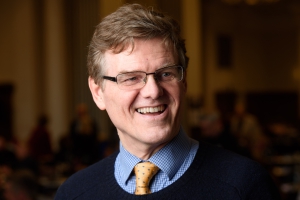 Dr Paul Roberts is Research Keeper in the Department of Antiquities at the Ashmolean Museum of Art and Archaeology, Oxford University.
Dr Paul Roberts is Research Keeper in the Department of Antiquities at the Ashmolean Museum of Art and Archaeology, Oxford University.
Paul has been a lecturer with the Arts Society/NADFAS for over twenty years, has travelled extensively to societies across the UK, and has also lectured on numerous cruises in and around the Mediterranean. Like all of us, he enjoys the immediate contact of face to face meetings, but is happy to provide online lectures if desired.
He studied Classics at the University of Cambridge, and Classical Archaeology at the Universities of Sheffield and Oxford. He then lived in Italy for several years, teaching and researching. He has travelled throughout the former lands of the Roman Empire, from Britain to Syria, and has excavated in Britain, Greece, Libya, Turkey and in particular Italy, where he is currently working on a Roman Villa in the Molise region of the Central Apennines. His research focuses on the daily life of ordinary people in the Greek and Roman worlds, and he has written books and articles on Greek and Roman daily life, Pompeii and Herculaneum, Sicily, Roman Emperors, mummy portraits, and Greek and Roman ceramics and glass. He is now writing a guide to the monuments and Emperors of ancient Rome.
From 1994 to 2015 he was Senior Roman Curator in the Greek and Roman Department at the British Museum, where he curated the exhibition Life and Death in Pompeii and Herculaneum (2013). Arriving in the Ashmolean Museum, Oxford in 2015, he co-curated Storms, War and Shipwrecks: Sicily and the Sea (2016) telling the history of Sicily through shipwreck finds. Most recently (2019/20) at the Ashmolean he curated Last Supper in Pompeii, a tribute to the Roman loveaffair with food and wine.
How to watch
• in person in the Cultural Centre• on the internet using Zoom

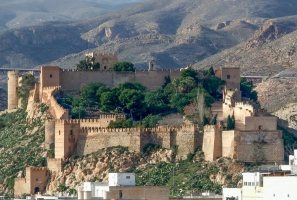 The Arabs were in Spain for 8 centuries from 711 when the Umayyads from Syria conquered Spain till 1492 when they were evicted by the Christians. During these 800 years many fortresses were built for defense.
The Arabs were in Spain for 8 centuries from 711 when the Umayyads from Syria conquered Spain till 1492 when they were evicted by the Christians. During these 800 years many fortresses were built for defense.
The Arab Alcazabas have several characteristics in common, but each one also has its own distinctive features. They are very often set idyllically on the top of a hill. Often built in the 8th c and modified or extended in the 12th c by Berber dynasties from North Africa.
The word qasaba means sugar cane and refers to the strong and inaccessible outside of the cane, like the fortress, but a beautifully soft and aromatic inside, like the palace full of luxury and comfort.
The 14 most beautiful Alcazabas will be highlighted, quoting travellers and poets who lived in those times: the Alcazaba of Málaga, Denia, Jaen, Xátiva, Almería, Merida, Vélez Málaga, Lorca, Antequera, Silves, Archidona, Badajoz, Granada and Niebla.
Pedro will present in this talk the calendar they made with gorgeous photos, many made by drones, which give a marvelous view. It includes a short description in Arabic, Spanish and English.
After the talk we will give out 100 free as a present to members for our anniversary, 1 per couple.
On Saturday 25 November Pedro will be our guide to visit the Alcazaba of Almeria.
This lecture will not be available on Zoom or catchup.
About Pedro Valcarcel
Pedro is teacher of Arabic in the language school EOI Axarquía and president of the association Sharqí Málaqa that support Arabic culture and heritage in Andalucia.
The association has produced the Calendar for 2024 that highlights 14 beautiful Alcazabas in Al Andalus.
Pedro and Helen Sijsling will give this talk together.
How to watch
• in person in the Nerja Museum (NB not available on the internet)
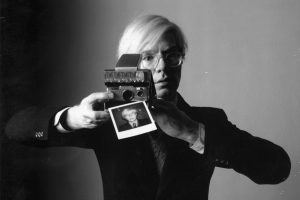
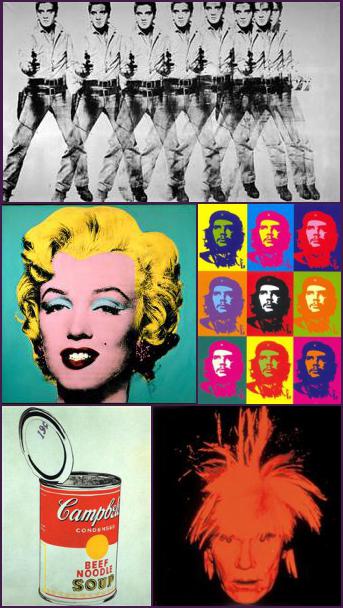 "Who is Andy Warhol?"
"Who is Andy Warhol?"
Art is anything you can get away with : this phrase by Andy Warhol defines his bravery in deciding to show as art what for many were everyday elements.
Andy Warhol was a visionary of today's culture when he said that in the future everyone would be famous for 15 minutes, very significant for a person who lived when social media and Big Brother only existed in George Orwell's books.
But Andy Warhol was more than just an artist who photographed celebrities and who amused himself in Studio 54 with a somewhat strange and unhealthy look.
Behind his seemingly superficial works is an interesting inner world that is evident in his writings and opinions.
His famous Campbell cans, which were a reflection of the food of the poor class in the United States where he came from, Marilyn Monroe, as an American goddess whose life had a tragic background, or his interest in fashion and illustration, as he arrived in the artworldt from fashion illustration, whose designs were sought after by the most famous magazines.
Against the glitter and shine of some of his most famous works, sometimes seemingly decorative, there is a man who is not very talkative, but very observant of the society around him. His companion was a Polaroid behind which he hid and portrayed the changing world of the 70s and 80s.
Andy Warhol is a world to know and this talk will delve into the person and artist to understand his work.
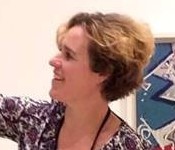 About Alejandra Carazo
About Alejandra Carazo
From my experience and studies in Modern Art, l learned to understand ART as a reflection of Humanity in each moment of History.
Artists and their creations open doors to vital aspects, from anthropology to science, through emotions, gifting us with an understanding of the world from spheres we do not usually encounter in our daily lives.
Trained by Amelia Arenas, former Head of Education of the MOMA, and thanks to the focus of Bernard and Christine Picasso in the values of Art and Education, I lived a lifetime experience at the Picasso Museum which allowed me to deliver the art world to more than 80k visitors in my 8 years at the institution, becoming an expert in teaching general audiences how to appreciate the artwork from their own personal view and background, meeting oneself in the act of viewing.
I nowadays continue to share my art knowledge in private collections and as freelance curator and lecturer.
At the same time life has led me to encounter with the no less exciting world of design, curating contemporary design homes where creativity and art play an important role.
How to watch
• in person in the Cultural Centre, Nerja• on the internet using Zoom
• on our YouTube channel for a limited period the day after the lecture.

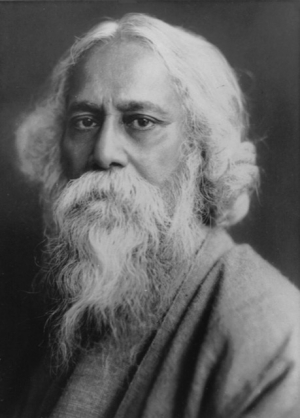
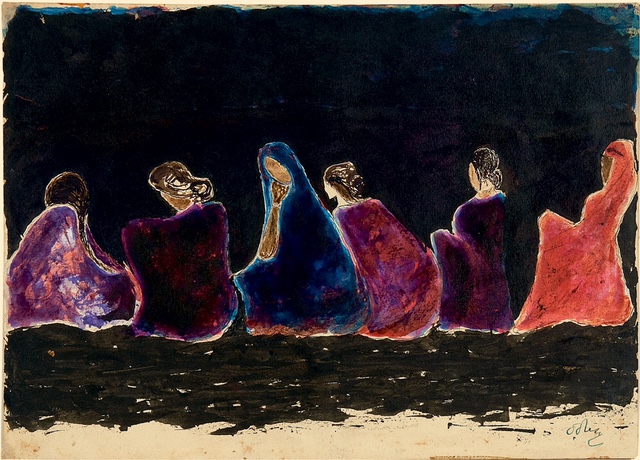 Rabindranath Tagore (1861-1941) is arguably the most important Indian artistic figure of the modern era. The first Prime Minister of India, Jawaharlal Nehru, claimed that he had two gurus: Gandhi and Tagore. A renowned poet, novelist, composer and painter, Tagore is also the only person in history to have written the national anthems for two countries (India and Bangladesh). He became a global sensation when he won the Nobel Prize for Literature in 1913, the first non-European to do so. This lecture provides an introduction to Tagore’s remarkable life and work, including his novels, poetry, songs and paintings. It also explores the role Tagore’s art played in the story of India’s fight for independence.
Rabindranath Tagore (1861-1941) is arguably the most important Indian artistic figure of the modern era. The first Prime Minister of India, Jawaharlal Nehru, claimed that he had two gurus: Gandhi and Tagore. A renowned poet, novelist, composer and painter, Tagore is also the only person in history to have written the national anthems for two countries (India and Bangladesh). He became a global sensation when he won the Nobel Prize for Literature in 1913, the first non-European to do so. This lecture provides an introduction to Tagore’s remarkable life and work, including his novels, poetry, songs and paintings. It also explores the role Tagore’s art played in the story of India’s fight for independence.
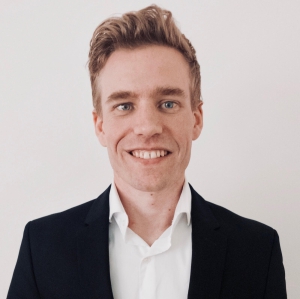 About John Stevens
About John Stevens
Dr John Stevens is a Research Associate at SOAS, University of London, and a member of academic staff at the SOAS South Asia Institute. His PhD in History is from University College London. He teaches British Imperial history, Indian history and Bengali language, and is a regular visitor to India and Bangladesh. He publishes widely in the fields of British and Indian history. His biography of the Indian guru Keshab Chandra Sen – Keshab: Bengal’s Forgotten Prophet - was published by Hurst, OUP New York and OUP India in 2018. He appears regularly in the Indian media, and was recently a guest on BBC Radio Four’s In Our Time, discussing the poet and artist Rabindranath Tagore.
How to watch
• in person in the Cultural Centre• on the internet using Zoom
• on our YouTube channel for a limited period the day after the lecture.

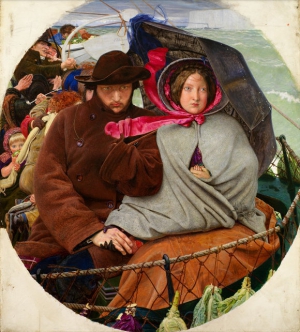
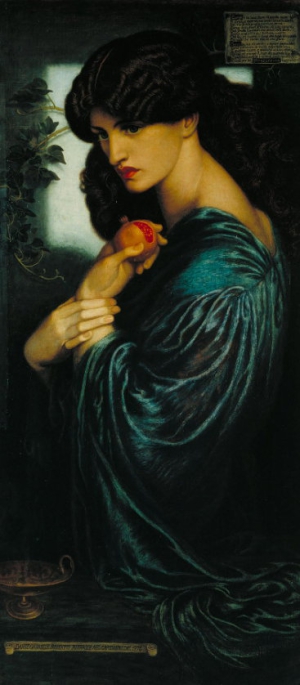 The Pre-Raphaelite Brotherhood were a group of young artists who came together in 1848 to shake up an art world they considered stultified and untruthful because artists were encouraged to copy only the Old Masters, especially the art of Raphael rather than find their own their own artistic path. So the Pre-Raphaelites looked for inspiration from artists that came before Raphael (hence Pre-Raphaelite) and looked for more truthful and honest subject-matter, challenging the rule that had been codified by the Royal Academy of Art. Not only were they art world rebels, but they also produced works of art that enjoy great popularity today, which we will explore in this talk.
The Pre-Raphaelite Brotherhood were a group of young artists who came together in 1848 to shake up an art world they considered stultified and untruthful because artists were encouraged to copy only the Old Masters, especially the art of Raphael rather than find their own their own artistic path. So the Pre-Raphaelites looked for inspiration from artists that came before Raphael (hence Pre-Raphaelite) and looked for more truthful and honest subject-matter, challenging the rule that had been codified by the Royal Academy of Art. Not only were they art world rebels, but they also produced works of art that enjoy great popularity today, which we will explore in this talk.
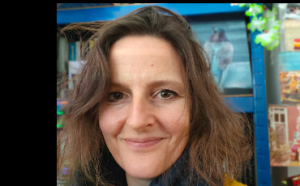 About Sarah Ciacci
About Sarah Ciacci
Sarah Ciacci has an MA in History of Art (Late 19th century French Painting and 20th Century Art) from University College London. She has been a Blue Badge Guide for London since 2008, specialising in art, museums and galleries, so relevant tours and visits for talks can be arranged. Since 2008 she has trained Blue Badge Guides in the National Gallery and is an art lecturer for trainee guides in Tate Britain, Tate Modern and for a period the National Portrait Gallery. She is a gallery educator and Adjunct Faculty at Richmond University (since 2008) teaching the History of British Art, the History of Museums in London and the History of London, and runs regular courses and independent lectures on a variety of art historical periods.
How to watch
• in person in the Cultural Centre• on the internet using Zoom
• on our YouTube channel for a limited period the day after the lecture.

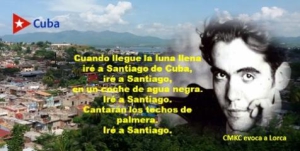 Cantes de ida y vuelta is a group of Flamenco songs that have their roots in Latin America, especially Cuba. It literally means roundtrip songs, rhythms that "travelled back" from Latin America to Andalucia and were flamencofied. Usually they have a more mellow and merry character than the traditional harsh laments in traditional flamenco.
Cantes de ida y vuelta is a group of Flamenco songs that have their roots in Latin America, especially Cuba. It literally means roundtrip songs, rhythms that "travelled back" from Latin America to Andalucia and were flamencofied. Usually they have a more mellow and merry character than the traditional harsh laments in traditional flamenco.
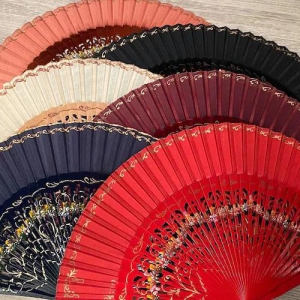 The exchange of musical influences was particularly important at the end of the Spanish–American War in 1898, when the United States gained control over Cuba, the last Spanish territory in Latin America. The defeat involved the return of many Spanish emigrants to Spain, popularly called indianos, to Andalucia, to Cádiz.
The exchange of musical influences was particularly important at the end of the Spanish–American War in 1898, when the United States gained control over Cuba, the last Spanish territory in Latin America. The defeat involved the return of many Spanish emigrants to Spain, popularly called indianos, to Andalucia, to Cádiz.
Federico Garcia Lorca, one of the greatest poets of Andalucia loved Flamenco and Cuba where he wrote beautiful lyrics for Flamenco.
We will hear the rhythms of Cuba, Mexico and Argentina in wonderful elegant and evocative Flamenco songs like the Guajira, which is always danced with a fan, the Colombiana, the Rumba or the Tango.
The Dance Company of Antonio Guerra will show these dances live while Helen Sijsling will be the narrator and explain in English.
This lecture will not be available on Zoom.
About Antonio Guerra and Helen Sijsling
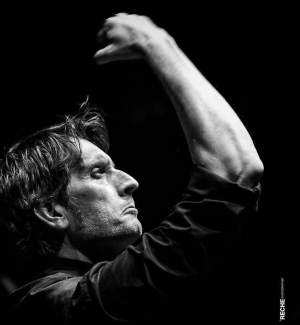 A
A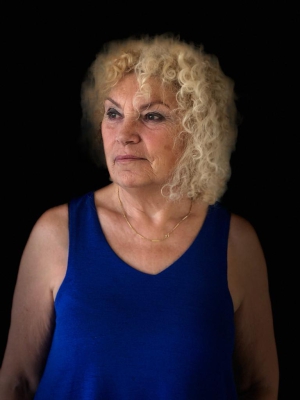 ntonio Guerra has had a Flamenco dancing Academy in Vélez Málaga for more than 30 years. He has performed internationally and nationally on many stages.
ntonio Guerra has had a Flamenco dancing Academy in Vélez Málaga for more than 30 years. He has performed internationally and nationally on many stages.
He entertained us in January 2019 (Heartbeat of the South: Flamenco, its history, its rhythms), and January 2022 (From Folklore to Flamenco: the Music of Málaga)
In both cases there was a narration in English by Helen Sijsling.
Helen Sijsling is a great lover of Flamenco and has been a student of Antonio Guerra for more than 15 years. As they do not speak English she loves to help them to get their love for flamenco across and to explain in English what the music and dance is about.
She has been the chairman of our society for several years and is a lecturer in her own right.
How to watch
• in person in the Cultural Centre, Nerja• on the internet using Zoom
• on our YouTube channel for a limited period the day after the lecture.

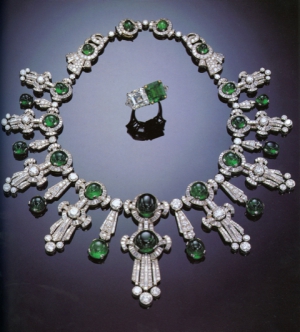 In this talk which follows on from “Downton to Gatsby”, Andrew shows how the Great Depression and the Second World war had such an extraordinary impact on fashion and jewellery design with the rise of Cinema and Hollywood.
In this talk which follows on from “Downton to Gatsby”, Andrew shows how the Great Depression and the Second World war had such an extraordinary impact on fashion and jewellery design with the rise of Cinema and Hollywood.
From the likes of Marlene Dietrich to Grace Kelly, he guides you through the various Screen Goddesses, how they were portrayed and what they gave to such dazzling effect.
He also shows that with the development of advertising, labour saving devices and leisure time, people had more opportunities to enjoy themselves and spend money on the finer things in life, as well as how the political events of the time influenced design and what was worn.
He also shows how The Belle Epoque and Art Deco styles did not end at the outbreak of the Second World War, but combined, to flower again with Christian Dior’s “New Look”.
About Andrew Prince
Andrew Prince has had a passion for jewellery since he was a small child. In fact his enthusiasm can be traced back to the time when, at the age of three, he swallowed one of his mother’s pearl earrings having found her jewel box hidden from him in a cupboard. The very first piece of jewellery he created was a ring made of copper wire pulled from the back of a television. He presented it to his grandmother (it turned her finger green and gave her a rash). He then created a necklace for his mother using beads taken off her wedding dress (she was not at all happy).
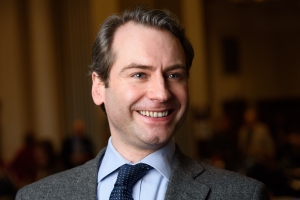 In 1980, when he was nine, Andrew's mother took him to the Princely Magnificence exhibition at the V&A, exhibiting Renaissance jewels dating from 1500 to 1630. It proved a revelation. Dazzled by the splendour and opulence of the jewels on show, Andrew decided then and there that creating jewellery was what he wanted to devote his life to. His passion for jewellery grew when, in 1984 on his first ever visit to Bond Street, Andrew viewed an exhibition by Castellani and Giulianoe at Wartski & Co’s. While there, he was allowed to handle beautiful 18th century gold boxes and magnificent imperial Russian pieces by Fabergé. In 1987, just before leaving school, he took time off to visit Geneva to view the astonishing Sotheby’s auction of the Duchess of Windsor's jewellery collection. Here, for the first time, he held pieces created by some of the world's greatest jewellers, fashioned from only the finest of stones and set in designs of outstanding quality. For the young Andrew, it was a life-changing experience.
In 1980, when he was nine, Andrew's mother took him to the Princely Magnificence exhibition at the V&A, exhibiting Renaissance jewels dating from 1500 to 1630. It proved a revelation. Dazzled by the splendour and opulence of the jewels on show, Andrew decided then and there that creating jewellery was what he wanted to devote his life to. His passion for jewellery grew when, in 1984 on his first ever visit to Bond Street, Andrew viewed an exhibition by Castellani and Giulianoe at Wartski & Co’s. While there, he was allowed to handle beautiful 18th century gold boxes and magnificent imperial Russian pieces by Fabergé. In 1987, just before leaving school, he took time off to visit Geneva to view the astonishing Sotheby’s auction of the Duchess of Windsor's jewellery collection. Here, for the first time, he held pieces created by some of the world's greatest jewellers, fashioned from only the finest of stones and set in designs of outstanding quality. For the young Andrew, it was a life-changing experience.
In August of that year, two weeks after his 16th birthday, Andrew started work in London’s Bond Street, working for The Antiques Roadshow expert Ian Harris. Under his guidance, Andrew developed an appreciation for jewels that were valued for their quality of design and craftsmanship, rather than for how much the stones in the piece were worth. He then joined the renowned contemporary jeweller Elizabeth Gage and worked with her on the design and production side. Through her and her private collection, Andrew was able to see and handle rare and extraordinary stones with names such as Sphene, Andalusite, Spinel and Dioptase, many of which are far rarer than diamonds. Elizabeth Gage was to have an enormous influence on Andrew's sense of what was possible within the realm of jewellery design.
Andrew's taste for fine 'costume jewellery' can be traced back to an antique market, where he came across a late Victorian brooch set with what he initially thought were emeralds and diamonds. They were, in fact, crystal and green glass set in silver and gold. He realised that beautiful jewellery didn't require expensive stones, and that it was the elegance of the design and the quality of the workmanship that truly mattered. Private commissions then started to trickle in. The trickle turned into a flood, as celebrities such as Michael Jackson (a large crystal and pearl shoulder jewel) and Shirley Bassey (necklaces) were seen wearing Andrew's creations.
In 2002, the V&A commissioned a collection of jewels to accompany the resplendent Tiaras, Past and Present exhibition which became one of their most popular exhibits. The exposure gained by the show then led to Andrew's jewellery appearing in film.
How to watch
• in person in the Cultural Centre• on the internet using Zoom
• on our YouTube channel for a limited period the day after the lecture.

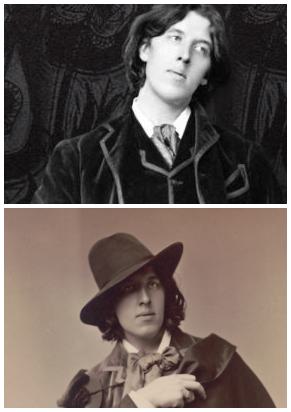
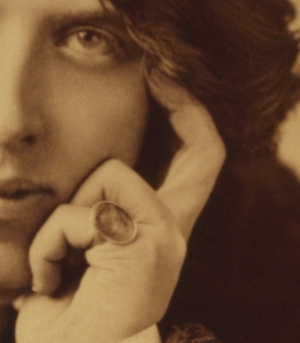 "I put all my genius into my life; I put only my talent into my works." I examine the public and private life of one of the world's most original and controversial artists. Born into a moderately respectable Dublin family Oscar Wilde recreated himself as an international celebrity and wrote a series of short stories and plays that charmed the world. In 1890 he also published the last of the great myths - The Picture of Dorian Gray. Ten years later Wilde, devoured by his fame, his demons and his decadence, would be dead.
"I put all my genius into my life; I put only my talent into my works." I examine the public and private life of one of the world's most original and controversial artists. Born into a moderately respectable Dublin family Oscar Wilde recreated himself as an international celebrity and wrote a series of short stories and plays that charmed the world. In 1890 he also published the last of the great myths - The Picture of Dorian Gray. Ten years later Wilde, devoured by his fame, his demons and his decadence, would be dead.
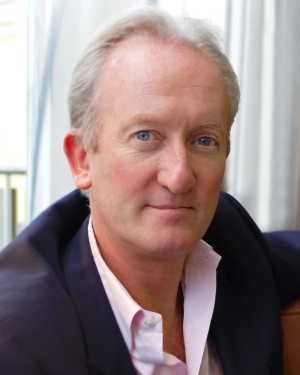 About Giles Ramsay
About Giles Ramsay
Giles Ramsay is an independent theatre director and producer who specializes in creating new work with artists in developing countries. He is the Founding Director of the charity Developing Artists (www.developingartists.org), a Fellow of St. Chad’s College, Durham University and Course Leader in Theatre at The Victoria and Albert Museum in London. Giles has run theatre projects in Botswana, Cape Verde, Equatorial Guinea, Kenya, Kosovo, Palestine, Mexico, Thailand and Zimbabwe and given numerous talks for institutions ranging from The Foundation for Mexican Literature in Mexico City to The Royal College of Physicians in London. He regularly lectures on the history and practice of theatre on the Queen Mary 2 as it sails from New York to the UK. Giles combines academic analysis with hands on experience to bring a unique insight to the world of the theatre.
How to watch
• in person in the Cultural Centre• on the internet using Zoom
• on our YouTube channel for a limited period the day after the lecture.

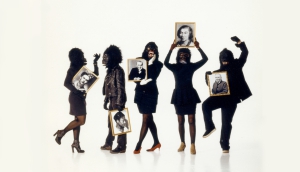 Cindy Polemis looks at how contemporary artists use their art to challenge and question established artistic conventions and in a wider social and political context. From Banksy’s headline grabbing graffiti to the political activism of Ai Wei Wei, artists deliver powerful and uncompromising messages which change the way we think about art and our world.
Cindy Polemis looks at how contemporary artists use their art to challenge and question established artistic conventions and in a wider social and political context. From Banksy’s headline grabbing graffiti to the political activism of Ai Wei Wei, artists deliver powerful and uncompromising messages which change the way we think about art and our world.
About Cindy Polemis
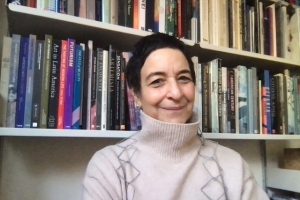 Cindy Polemis is an art historian, independent lecturer and art guide. She has a BA in Modern History from Oxford University and as a mature student she went back to university to study first for a BA and then for a Masters in History of Art at Birkbeck College, London University. Before that she spent many years as a radio producer and presenter for the BBC World Service working in news and current affairs. Since 2016 Cindy has worked as an official art guide at Tate Britain and Tate Modern. She has also been a trustee at the Museum of the Home, formerly the Geffrye Museum. Cindy has accumulated a wide range of art historical knowledge ranging from 18th European and British art to the contemporary international art scene. She has been an official guide for both Frieze Masters and Frieze Art Fairs in London. She is particularly keen to draw parallels with art and social history and her lectures are accessible and engaging, drawing out the stories of art and artists which are steeped in human emotions and experiences which we all share.
Cindy Polemis is an art historian, independent lecturer and art guide. She has a BA in Modern History from Oxford University and as a mature student she went back to university to study first for a BA and then for a Masters in History of Art at Birkbeck College, London University. Before that she spent many years as a radio producer and presenter for the BBC World Service working in news and current affairs. Since 2016 Cindy has worked as an official art guide at Tate Britain and Tate Modern. She has also been a trustee at the Museum of the Home, formerly the Geffrye Museum. Cindy has accumulated a wide range of art historical knowledge ranging from 18th European and British art to the contemporary international art scene. She has been an official guide for both Frieze Masters and Frieze Art Fairs in London. She is particularly keen to draw parallels with art and social history and her lectures are accessible and engaging, drawing out the stories of art and artists which are steeped in human emotions and experiences which we all share.
How to watch
• in person in the Cultural Centre• on the internet using Zoom
• on our YouTube channel for a limited period the day after the lecture.

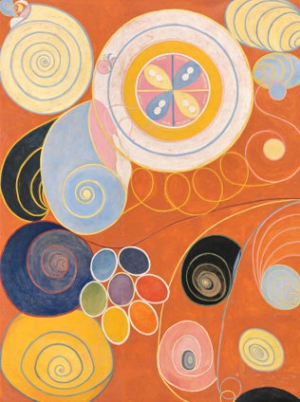 Cindy Polemis explores the work of three leading Scandinavian artists with very different styles and practice:the eerie and sublime landscapes of Norwegian artist Nicolas Astrup , the haunting portraits of Finnish painter Helen Schjerfbeck, and the extraordinary shapes and swirls of Swedish artist Hilma af Klint, now considered to be one of Europe’s first abstract artists.
Cindy Polemis explores the work of three leading Scandinavian artists with very different styles and practice:the eerie and sublime landscapes of Norwegian artist Nicolas Astrup , the haunting portraits of Finnish painter Helen Schjerfbeck, and the extraordinary shapes and swirls of Swedish artist Hilma af Klint, now considered to be one of Europe’s first abstract artists.
About Cindy Polemis
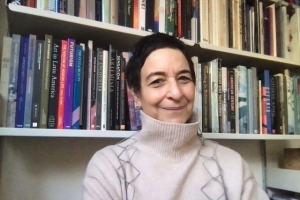 Cindy Polemis is an art historian, independent lecturer and art guide. She has a BA in Modern History from Oxford University and as a mature student she went back to university to study first for a BA and then for a Masters in History of Art at Birkbeck College, London University. Before that she spent many years as a radio producer and presenter for the BBC World Service working in news and current affairs. Since 2016 Cindy has worked as an official art guide at Tate Britain and Tate Modern. She has also been a trustee at the Museum of the Home, formerly the Geffrye Museum. Cindy has accumulated a wide range of art historical knowledge ranging from 18th European and British art to the contemporary international art scene. She has been an official guide for both Frieze Masters and Frieze Art Fairs in London. She is particularly keen to draw parallels with art and social history and her lectures are accessible and engaging, drawing out the stories of art and artists which are steeped in human emotions and experiences which we all share.
Cindy Polemis is an art historian, independent lecturer and art guide. She has a BA in Modern History from Oxford University and as a mature student she went back to university to study first for a BA and then for a Masters in History of Art at Birkbeck College, London University. Before that she spent many years as a radio producer and presenter for the BBC World Service working in news and current affairs. Since 2016 Cindy has worked as an official art guide at Tate Britain and Tate Modern. She has also been a trustee at the Museum of the Home, formerly the Geffrye Museum. Cindy has accumulated a wide range of art historical knowledge ranging from 18th European and British art to the contemporary international art scene. She has been an official guide for both Frieze Masters and Frieze Art Fairs in London. She is particularly keen to draw parallels with art and social history and her lectures are accessible and engaging, drawing out the stories of art and artists which are steeped in human emotions and experiences which we all share.
How to watch
• in person in the Cultural Centre• on the internet using Zoom
• on our YouTube channel for a limited period the day after the lecture.


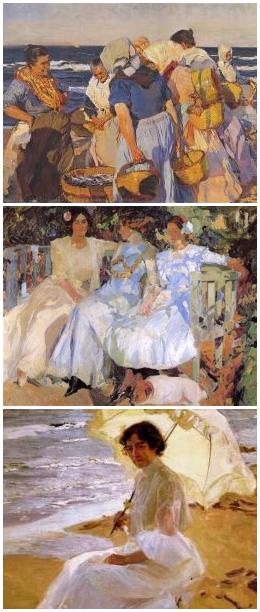 One of the most extraordinary Spanish artists from Valencia; Joaquin Sorolla has become better known more recently. He lived from 1863 to 1923 and created a world full of light and colour which delights the senses. Sometimes a social painter he was more concerned with capturing light falling on bodies and sea-scapes and his wonderful technique will be considered in this colourful lecture. His final Visions of Spain now in New York will also be shown.
One of the most extraordinary Spanish artists from Valencia; Joaquin Sorolla has become better known more recently. He lived from 1863 to 1923 and created a world full of light and colour which delights the senses. Sometimes a social painter he was more concerned with capturing light falling on bodies and sea-scapes and his wonderful technique will be considered in this colourful lecture. His final Visions of Spain now in New York will also be shown.
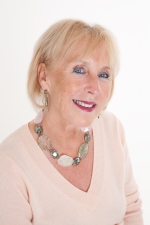 About Jacqueline Cockburn
About Jacqueline Cockburn
Jacqueline is Managing Director of an art tours company, running residential courses in Andalucía, Southern Spain in the art and culture of the region www.artandculturetravel.com Jacqueline is a course director and lecturer at the V&A and also lectures at The Royal Academy, The Art Fund, The London Art History Society and has toured New Zealand and Australia for The Arts Society. Her specialist field is Spanish Art, but she also lectures on European Art 1790-1950. Her most recent publication is A Taste of Art, London (Unicorn Press 2019). Jacqueline films her lectures and is currently delivering lectures, study days and courses online and live.
How to watch
• in person in the Cultural Centre• on the internet using Zoom
• on our YouTube channel for a limited period the day after the lecture.












